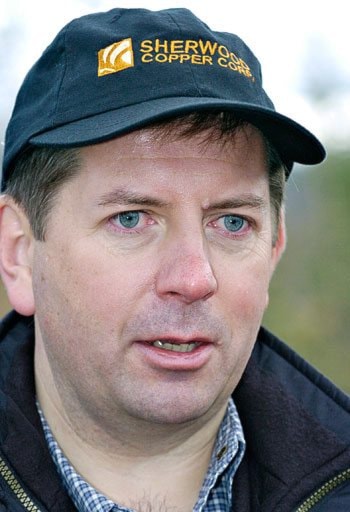The boss of Minto mine is moving on.
Stephen Quin steps down as president of Capstone Mining Corp. at the end of the month. The brusque Australian has been the public face of the mine since it first opened in October of 2007.
CEO Darren Pylot said in a release that Quin was “integral” to the company’s success.
Quin’s successor will be named in the new year. He will continue to serve as a director for Capstone.
Quin’s next plans, for now, remain unclear. But, as a geologist by trade, he says he prefers the excitement of exploring properties and building mines, “as opposed to running them.”
Quin began working for Capstone’s predecessor, Sherwood Copper, five and a half years ago. At the time, the company had a market capitalization of $10 million.
“Now it’s over $900 million,” said Quin. “It’s grown from an idea to a company with 1,000 employees, two mines and $200 million in the bank.”
The Yukon’s mining industry has grown a lot during that time, too. When Minto opened, it was Yukon’s only hardrock mine. This autumn, two more have opened: the Wolverine zinc and silver mine near Ross River and Alexco’s Bellekeno silver mine outside Keno City.
“It’s great to see it taking off,” said Quin. “When we started, we were kind of the lone wolf. Now, everybody’s doing things. Hopefully we made some small contribution to that by increasing interest in the Yukon.”
The Minto property, located 240 kilometres north of Whitehorse, was first explored in the early 1970s. In the mid-1990s, previous owners permitted the project and began to build a mill and permanent camp at a cost of $10 million. But the project stalled in 1997, when copper prices collapsed.
Sherwood Copper scooped up the project in the summer of 2005 for the bargain-basement price of $7 million. Two years later, it had bolstered its reserves with more drillwork, raised $100 million and opened the copper-gold mine.
Minto mine faced heavy criticism from conservationists and First Nations last autumn, when it dumped one million litres of wastewater into the Yukon River over a period of four months. At the time, Quin blamed an unusually heavy spring melt that deluged the mine with runoff and overloaded its water treatment plant.
Minto has since built a bigger, better treatment plant and dug ditches to divert more runoff away from the minesite.
The mine initially processed 1,500 tons of ore per day. It now spits out more than double that volume, at 3,400 tons per day, and the company is applying to boost output to 4,000 tons per day. (But this year saw output slump while Minto repaired filters at its tailings plant.)
The mine’s resources also continue to expand. This summer, the company discovered a new, high-grade deposit they dubbed Wildfire. Last week, Capstone announced another find, called Inferno.
The most lucrative strikes are deep in the earth, prompting the company to prepare plans to build an underground mine beneath a proposed second pit. These plans were recently put before the Yukon Environmental and Socioeconomic Assessment Board.
Barring any problems with regulators, the mine could be extracting ore underground in 2012.
Contact John Thompson at johnt@yukon-news.com.
